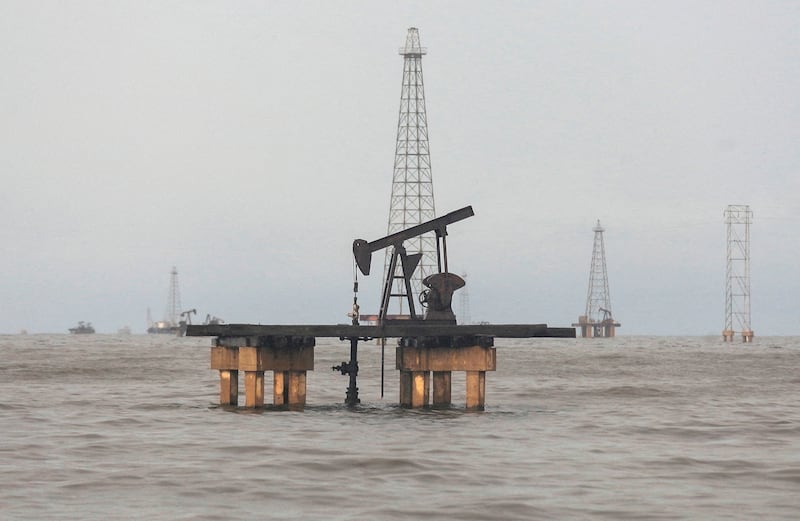Oil prices fell on Tuesday, reversing most of their gains from the previous day following top crude exporter Saudi Arabia’s decision to cut more output.
Brent, the benchmark for two thirds of the world’s oil, was trading 1.54 per cent lower at $75.53 a barrel at 5.50pm UAE time.
West Texas Intermediate, the gauge that tracks US crude, was down 1.72 per cent at $70.90 a barrel.
Both Brent and WTI rose by more than 2 per cent on Monday before paring most gains to settle lower.
“The risks are now tilted to the downside because the Opec+ meeting was the major upside risk for oil bears and it’s cleared for now,” said Ipek Ozkardeskaya, a senior analyst at Swissquote Bank.
The 23-member Opec+ alliance of oil producers has extended its output cuts until the end of 2024 as concerns about economic growth weigh on the outlook for fuel demand.
Saudi Arabia will make an output cut of a million barrels per day in July, which could be extended if required.
The group has total production curbs of 3.66 million bpd, or about 3.7 per cent of global demand, in place, including a 2 million bpd reduction agreed on last year and voluntary cuts of 1.66 million bpd announced in April.
“Considering the kingdom’s role as central banker of the oil market, those are real barrels – not paper barrels – that will be removed from the market,” UBS strategist Giovanni Staunovo said in a research note.
“Saudi [Arabia]’s additional production cuts should further tighten the oil market this summer. We expect larger oil inventory declines over the coming weeks to support prices.”
Fatih Birol, executive director of the International Energy Agency, said on Monday that the possibility of oil prices going up was higher after the Opec+ decision.
Mr Birol, who was speaking at an aviation event in Istanbul, said gains in crude prices would also depend on China’s economic growth, which has so far been sluggish after the lifting of Covid-19 restrictions in January.
Saudi Arabia's decision to pump less oil will also contribute to a tighter market in the second half of the year, he said.
The IEA has predicted that global crude demand will hit record levels this year on the back of an economic recovery in China, the world’s second-largest economy and top crude importer.
Investors are also waiting to see if the US Federal Reserve will increase or maintain interest rates when officials of the central bank meet next week.
Higher interest rates can affect economic growth and dampen crude demand.
The US ISM services index, a gauge of performance in the country’s services sector, fell to 50.3 in May from 51.9 in April, reaching a five-month low.
A reading above 50 indicates expansion while a reading below that signals contraction.
Meanwhile, US factory orders rose for a second straight month in April, rising by 0.4 per cent, but came in below expectations of a gain of 0.8 per cent, according to Emirates NBD.






